Feature of Echo Envelope Fluctuation and Its Application in the Discrimination of Underwater Real Echo and Synthetic Echo
Abstract
:1. Introduction
- This paper focuses on the characterization and extraction of echo fluctuation features from an underwater complex target. Based on practical engineering applications, it presents a method for discrimination of a real echo from a synthetic echo underwater.
- The high-frequency fluctuation of an echo envelope was characterized by the echo envelope fluctuation intensity, and a model of echo envelope fluctuation intensity was established.
- Results from simulation and real sea experiments of a benchmark model and synthetic echo are provided in detail.
- The feasibility of the proposed method for discriminating between a real target echo and a synthetic echo was verified by real sea experiment. The method proposed in this paper has low processing complexity and provides a new and valuable insight into the classification of underwater real and synthetic echoes.
2. Characterization of Echo Envelope Fluctuation Features
2.1. Relation of Echo Envelope Fluctuation with Carrier Frequency of Incident Pulse
2.2. Characterization of Underwater Target Echo Envelope Fluctuation Intensity
3. Extraction of Echo Envelope Fluctuation Features
3.1. Simulation Study
3.1.1. Simulation Study of Benchmark
3.1.2. Simulation Study of Synthetic Echo
3.2. Experiment Study of Benchmark Model and Rock
3.2.1. Experiment Configuration
3.2.2. Experimental Results
- Filter the data by a bandpass filter to minimize the interference;
- Calculate the envelope of the echo signal;
- Normalize the echo envelope for magnitude consistency;
- Differentiate the echo envelope;
- Calculate the fluctuation intensity and the standard deviation;
- Process the echo in whole azimuths.
A. Fluctuation Intensity
B. Standard Deviation of Fluctuation Intensity
C. Envelope Fluctuation Features of Rock
4. Method of Real Echo and Synthetic Echo Discrimination
5. Experimental Results
6. Discussion and Conclusions
Author Contributions
Funding
Acknowledgments
Conflicts of Interest
References
- He, X.Y.; Jiang, X.Z.; Liu, J.Y. Submarine echo simulation based on echo highlight model. J. Unmanned Undersea Syst. 2001, 9, 15–18. [Google Scholar]
- Lin, W.; Liu, L.J.; Xu, Y. Simulation of Underwater target echo based on highlight model. Appl. Mech. Mater. 2014, 536–537, 39–42. [Google Scholar] [CrossRef]
- He, C.; Zhao, A.B.; Zhou, B.; Song, X.; Niu, F. Parameter measurement research of sonar echo highlights. J. Acoust. Soc. Am. 2014, 135, 2303. [Google Scholar] [CrossRef]
- Cerqueira, R.; Trocoli, T.; Neves, G.; Joyeux, S.; Albiez, J.; Oliveira, L. A novel GPU-Based sonar simulator for real-time applications. Comput. Graphics 2017, 68, 66–76. [Google Scholar] [CrossRef]
- Gokhan, I.; Ozgur, B.A. Three-dimensional underwater target tracking with acoustic sensor networks. IEEE Trans. Veh. Technol. 2011, 60, 3897–3906. [Google Scholar]
- Luo, J.H.; Han, Y.; Fan, L.Y. Underwater acoustic target tracking: A review. Sensors 2018, 13, 112. [Google Scholar] [CrossRef] [PubMed]
- Seo, Y.; On, B.; Im, S.; Shim, T.; Seo, I. Underwater Cylindrical Object Detection Using the Spectral Features of Active Sonar Signals with Logistic Regression Models. Appl. Sci. 2018, 8, 116. [Google Scholar] [CrossRef]
- Meng, Q.X.; Yang, S.E. A wave structure based method for recognition of marine acoustic target signals. J. Acoust. Soc. Am. 2014, 137, 2242. [Google Scholar] [CrossRef]
- Fan, J. Study on Echo Characteristics of Underwater Complex Targets. Ph.D. Thesis, Shanghai Jiaotong University, Shanghai, China, 2001; p. 16. [Google Scholar]
- Jia, H.J.; Li, X.K.; Meng, X.X. Rigid and elastic acoustic scattering signal separation for underwater target. J. Acoust. Soc. Am. 2017, 142, 653–665. [Google Scholar] [CrossRef] [PubMed]
- Yang, M.; Li, X.; Yang, Y.; Meng, X. Characteristic analysis of underwater acoustic scattering echoes in the wavelet transform domain. J. Mar. Sci. Appl. 2017, 16, 93–101. [Google Scholar] [CrossRef]
- Wu, Y.S.; Li, X.K.; Wang, Y. Extraction and classification of acoustic scattering from underwater target based on Wigner-Ville distribution. Appl. Acoust. 2018, 138, 52–59. [Google Scholar] [CrossRef]
- Xu, G.F.; Li, C.X.; Ding, S.Q. Study on extracting the information of elastic scattering wave. Ocean Technol. 2006, 25, 94–98. [Google Scholar]
- Tang, W.L. Highlight model of echoes from sonar targets. ACTA Acoust. 1994, 19, 92–100. [Google Scholar]
- Lou, S.C.; Chao, R.M.; Ko, S.; Lin, K.M.; Zhong, J.X. A simplified signal analysis algorithm for the development of a low cost underwater echo-sounder. Measurement 2011, 44, 1572–1581. [Google Scholar] [CrossRef]
- Wang, M.Z.; Huang, X.W.; Hao, C.Y. Model of an underwater target based on target echo highlight structure. J. Syst. Simul. 2003, 15, 21–25. [Google Scholar]
- Muller, M.W.; Au, W.W.; Nachtigall, P.E.; Allen, J.S., III; Breese, M. Phantom echo highlight amplitude and temporal difference resolutions of an echolocating dolphin, Tursiops truncates. J. Acoust. Soc. Am. 2007, 122, 2255–2262. [Google Scholar] [CrossRef] [PubMed]
- Dankiewicz, L.A.; Helweg, D.A.; Moore, P.W.; Zafran, J.M. Discrimination of amplitude-modulated synthetic echo trains by an echolocating bottlenose dolphin. J. Acoust. Soc. Am. 2002, 112, 1702–1708. [Google Scholar] [CrossRef] [PubMed] [Green Version]
- Chen, Y.F.; Li, G.J.; Wang, Z.S.; Zhang, M.W.; Jia, B. Statistical feature of underwater target echo highlight. Acta Phys. Sin. 2013, 62, 084302. [Google Scholar]
- Chen, Y.F.; Li, S.; Wang, Z.S.; Li, G.J.; Gao, F. Echo magnitude fluctuation feature of underwater target. J. Ship Mech. 2017, 21, 218–227. [Google Scholar]
- Chen, Y.F.; Jia, B.; Li, S.; Wang, Z.S.; Li, G.J. Discrimination of real underwater target echo and synthetic echo based on envelope modulation rate. J. Harbin Eng. Univ. 2016, 37, 1467–1472. [Google Scholar]
- Nell, C.W.; Gilroy, L.E. An Improved BASIS Model for the BeTSSi Submarine; DRDC Atlantic TR 2003-199; Defence R&D Canada: Ottawa, ON, Canada, November 2003.
- Fan, J.; Zhu, B.L.; Tang, W.L. Modified geometrical highlight model of echoes from non-rigid surface sonar target. Acta Acust. 2001, 26, 545–550. [Google Scholar]
- Fan, J.; Li, J.L.; Liu, T. Transition characteristics of echoes from complex shape targets in water. J. Shanghai Jiaotong Univ. 2002, 36, 161–164. [Google Scholar]
- Fan, J.; Tang, W.L.; Zhuo, L.K. Planar elements method for forecasting the echo characteristics from sonar targets. J. Ship Mech. 2012, 16, 171–180. [Google Scholar]
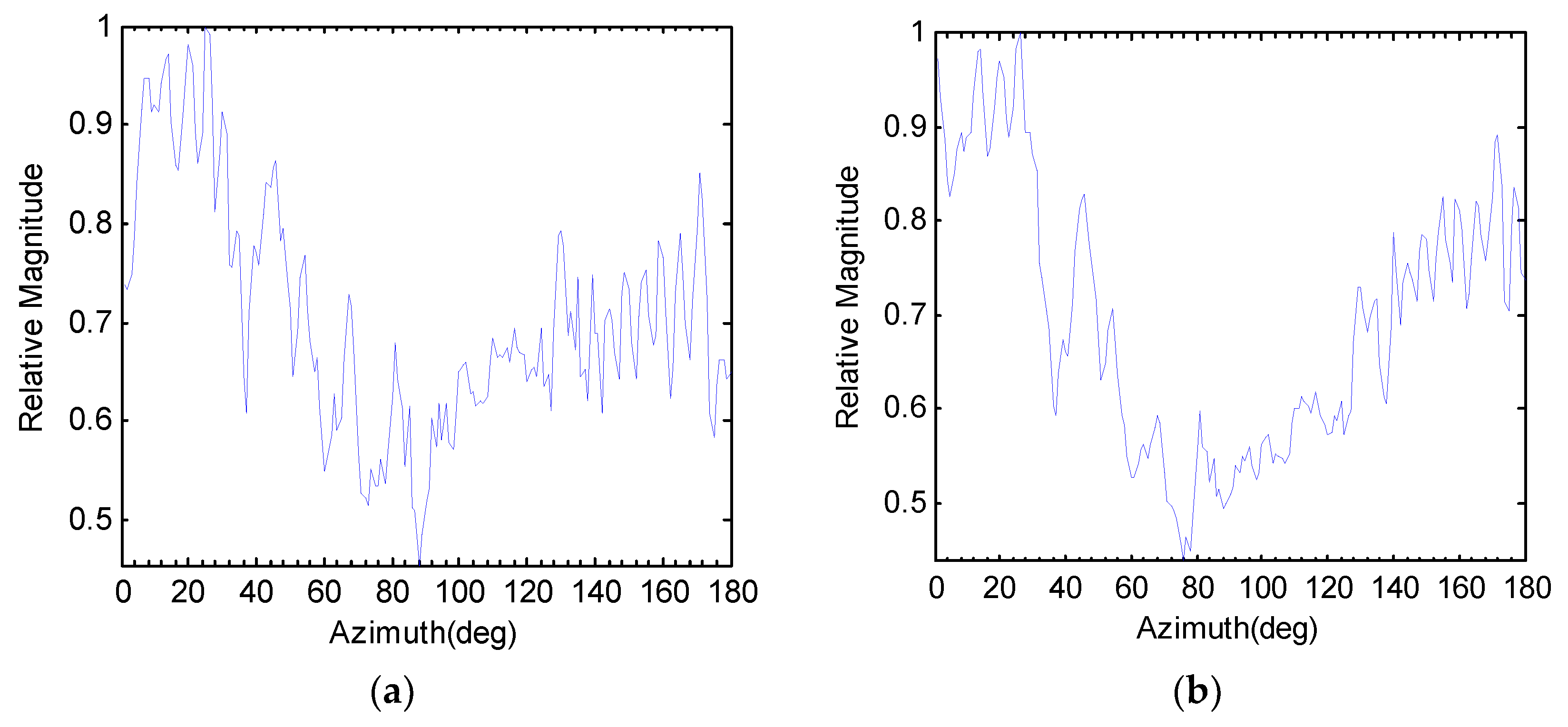

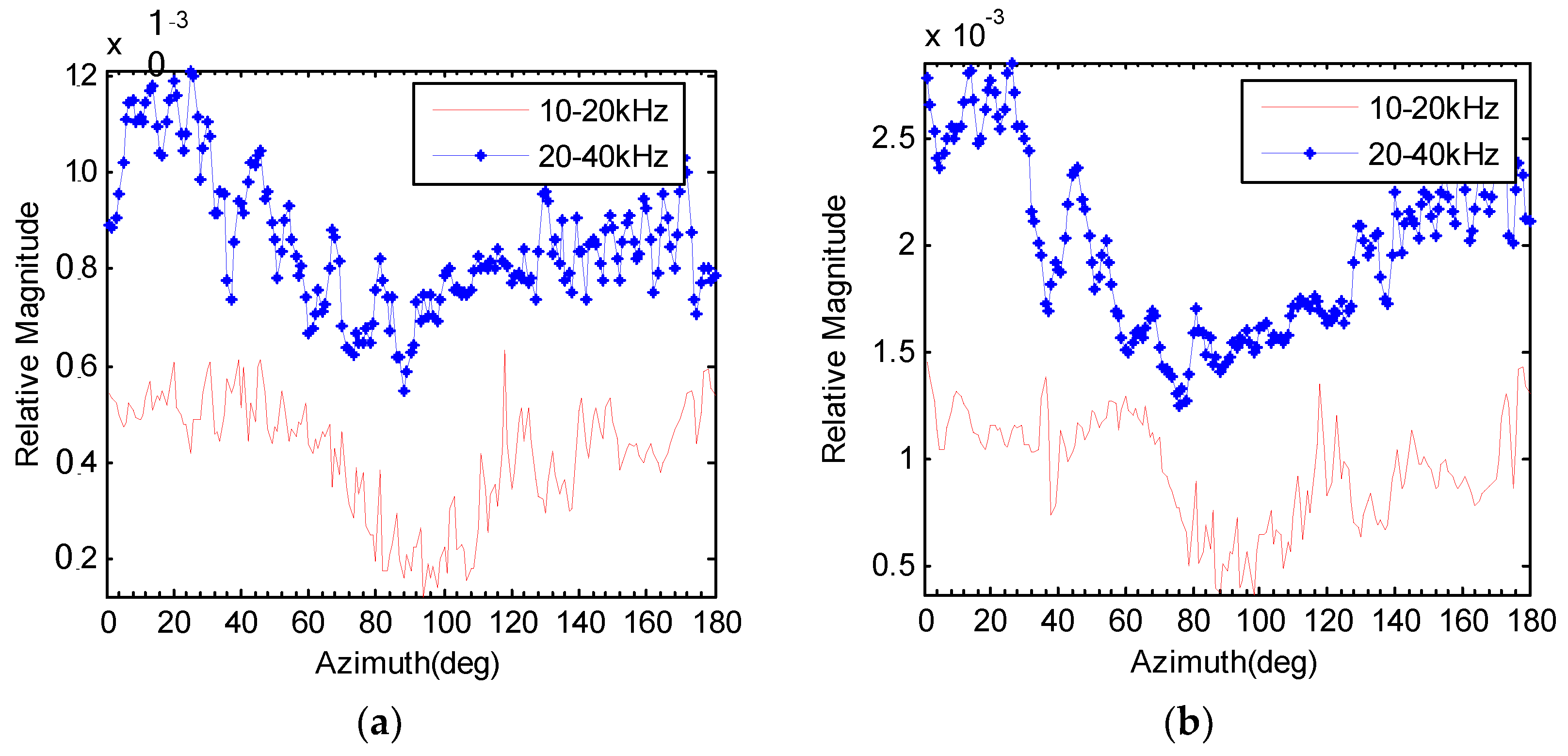
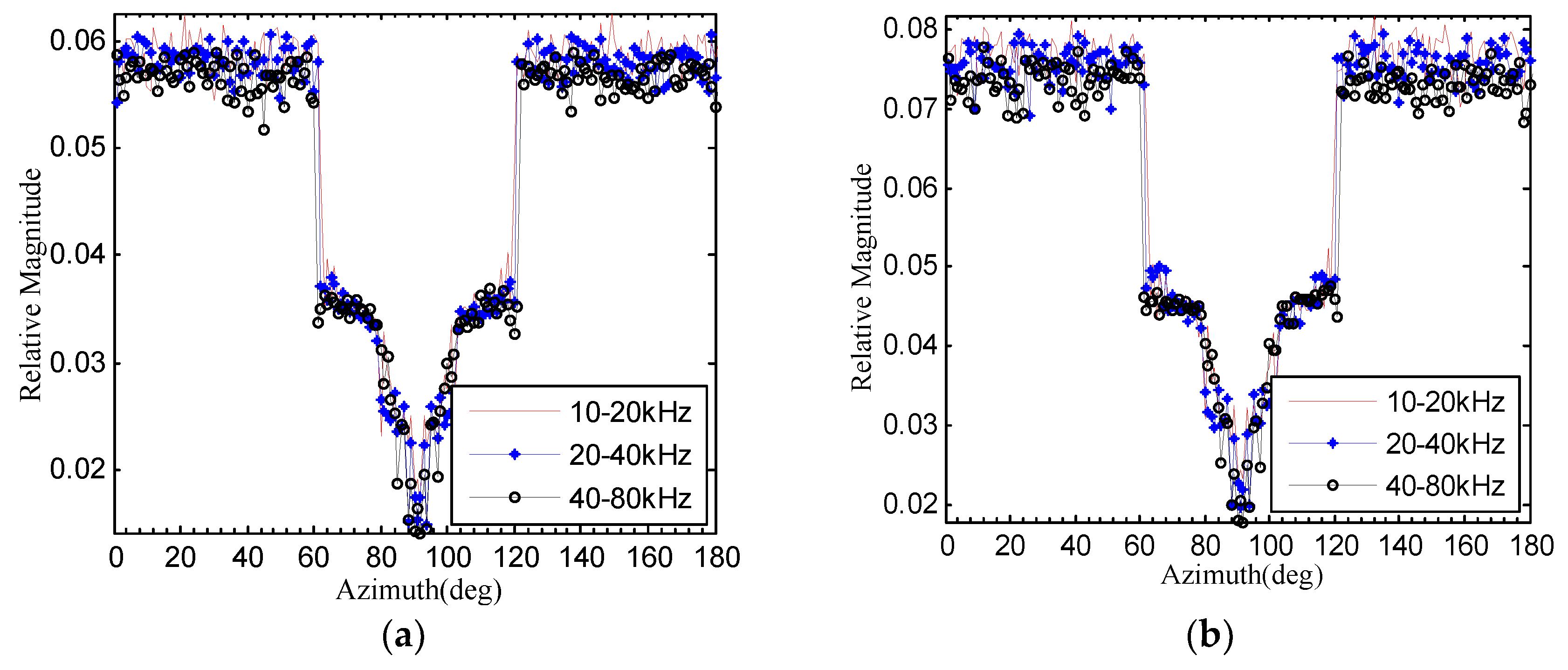
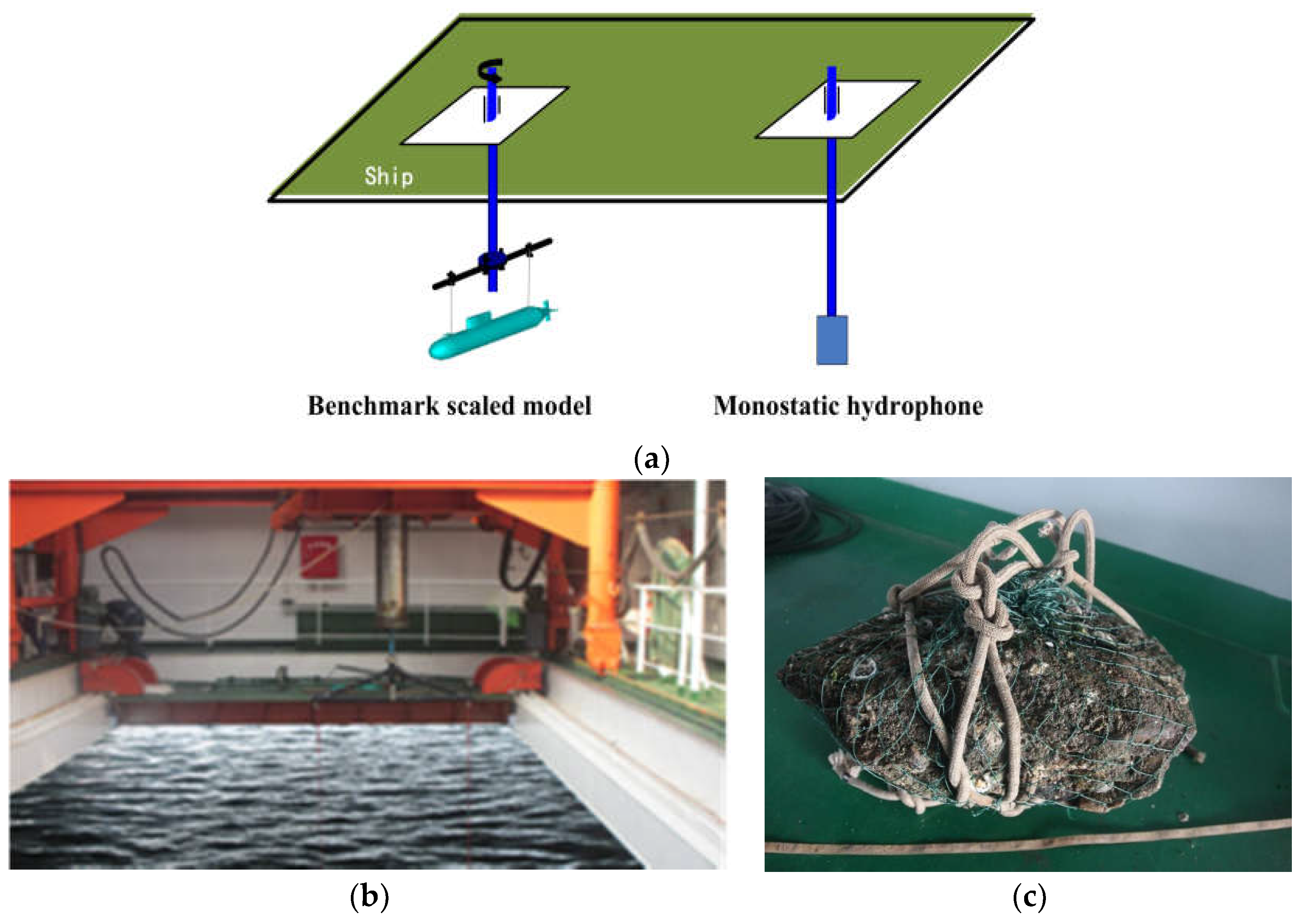
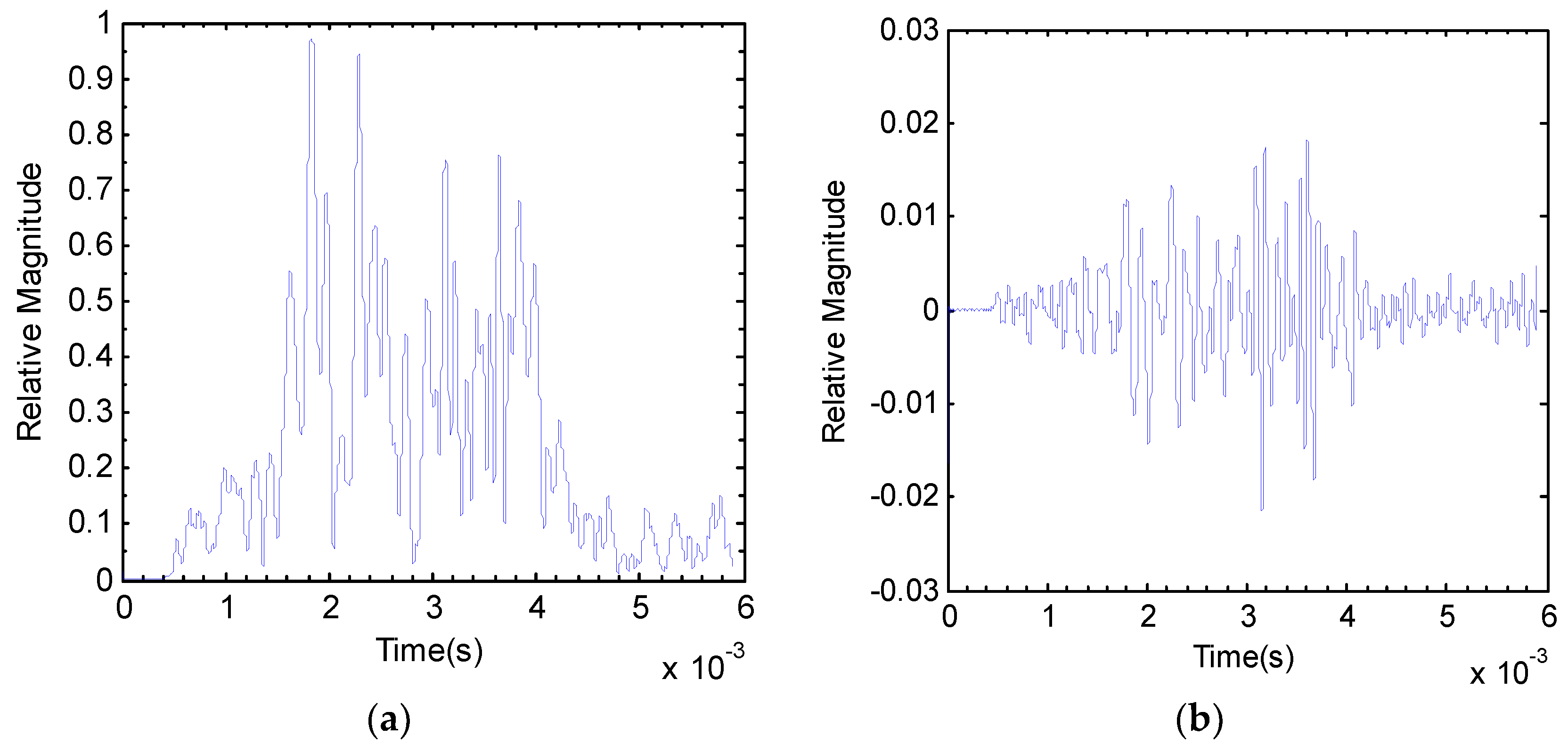
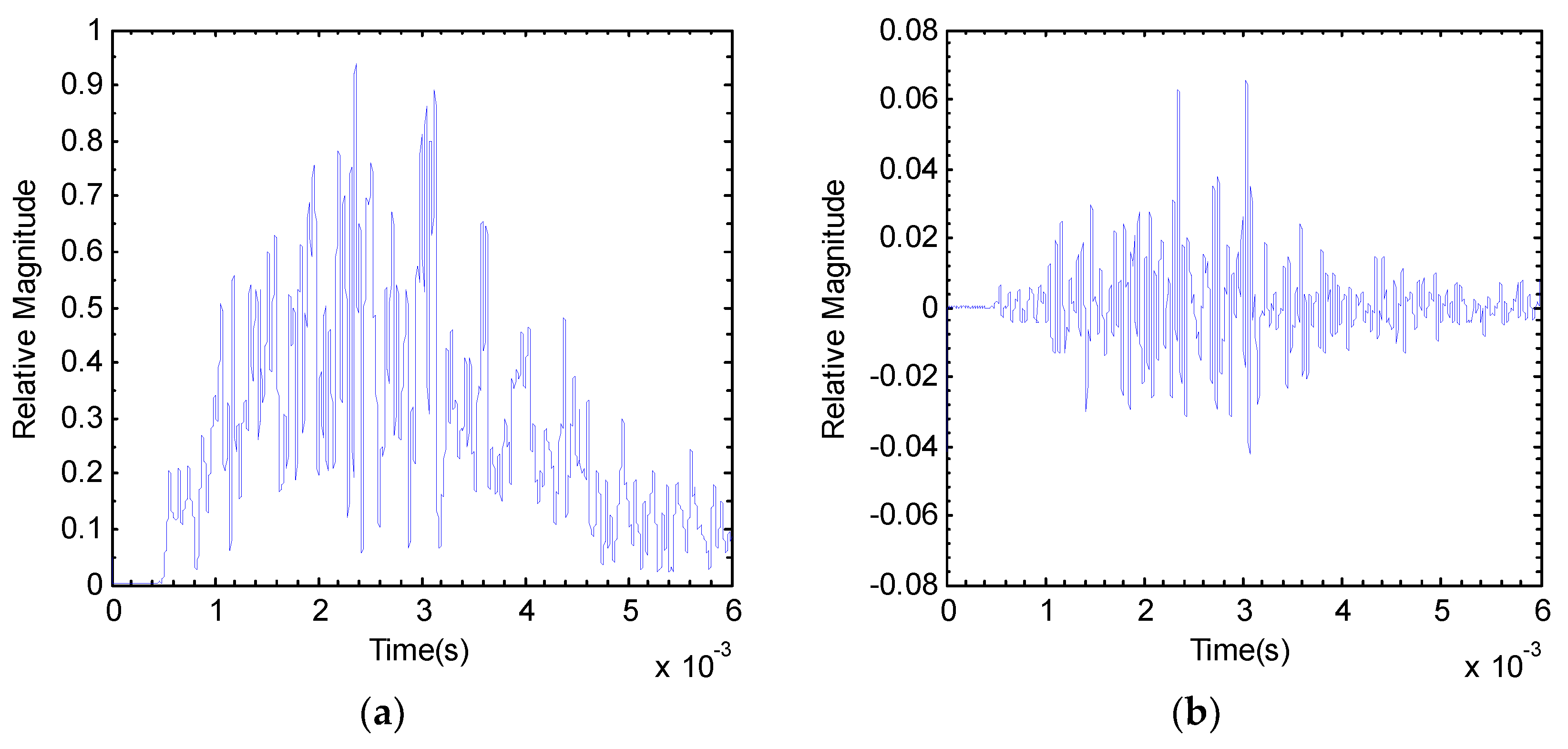
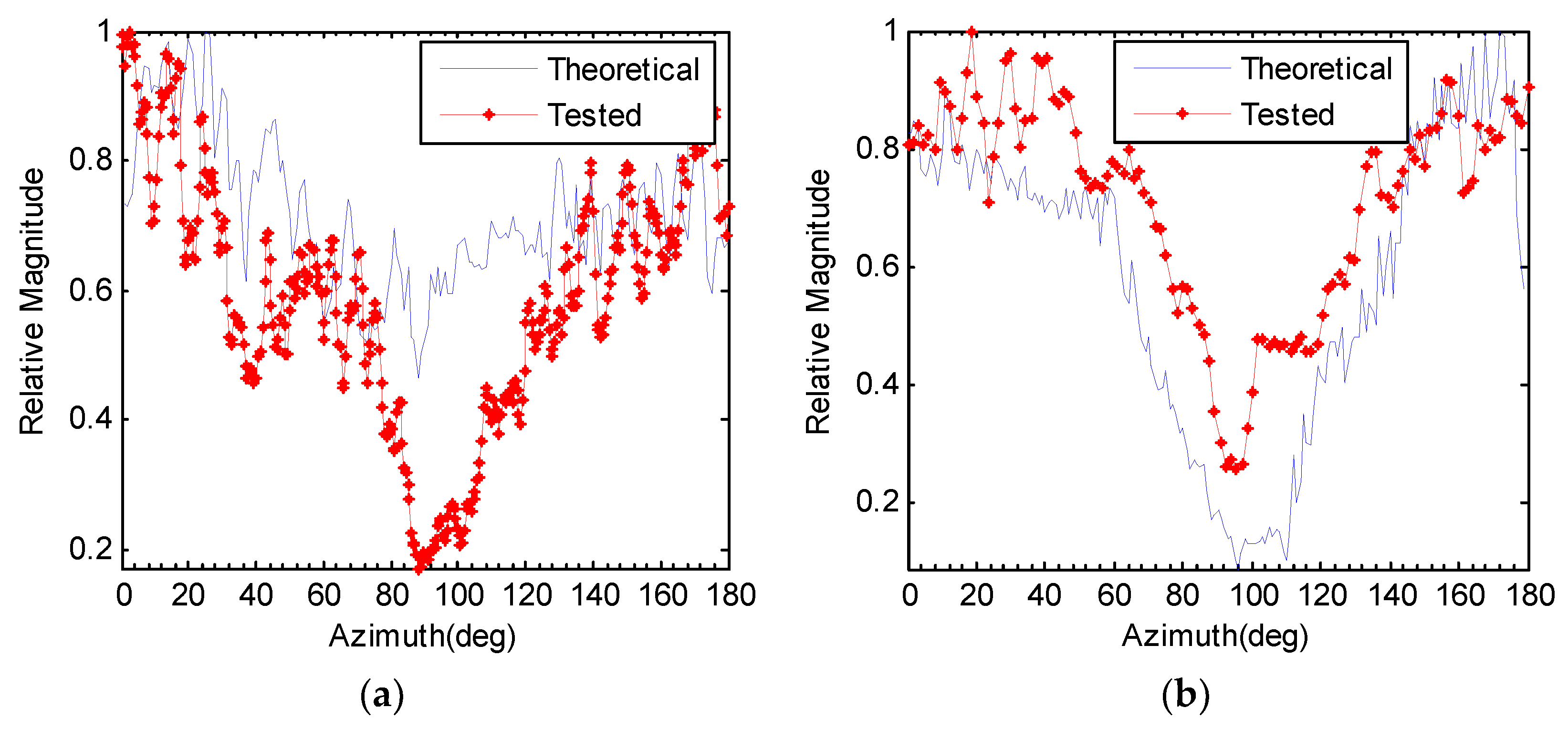
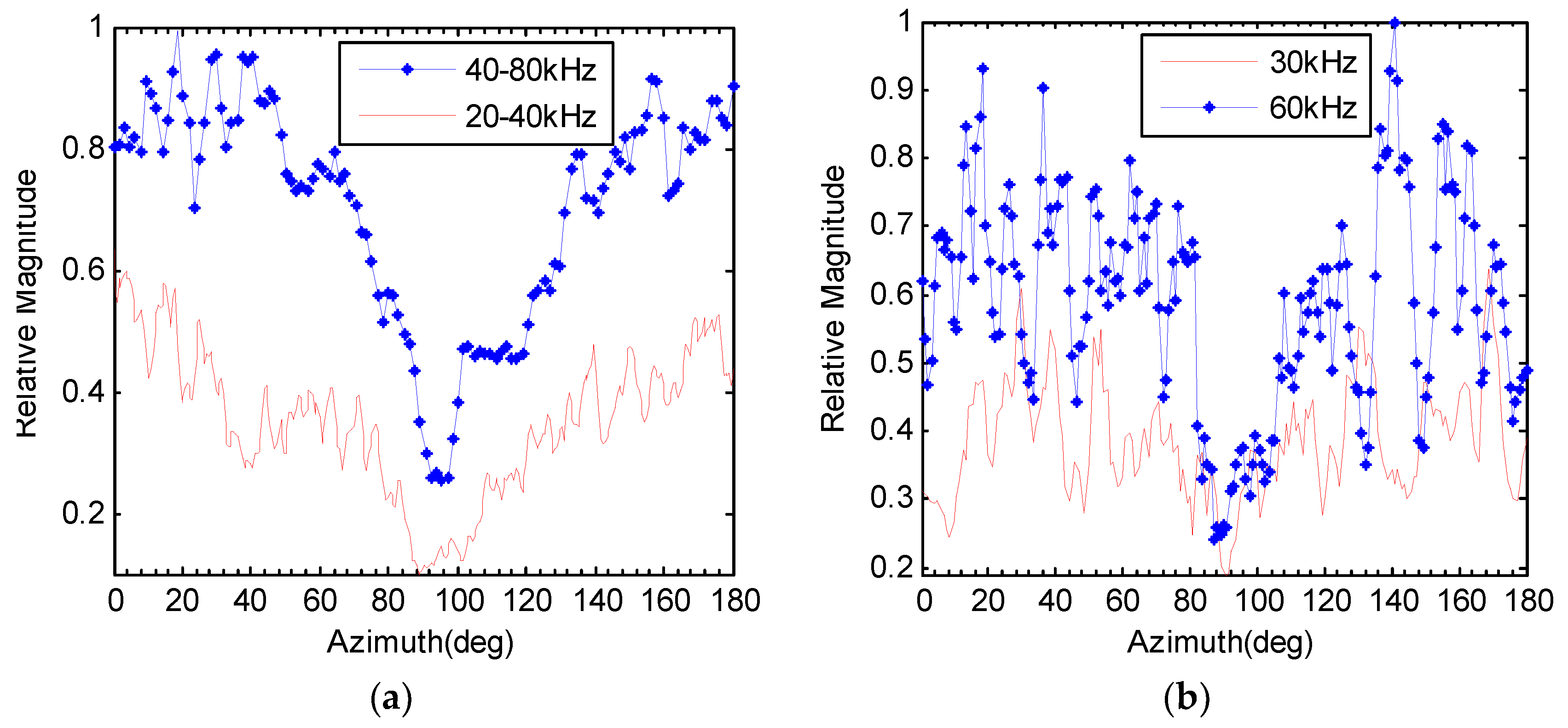
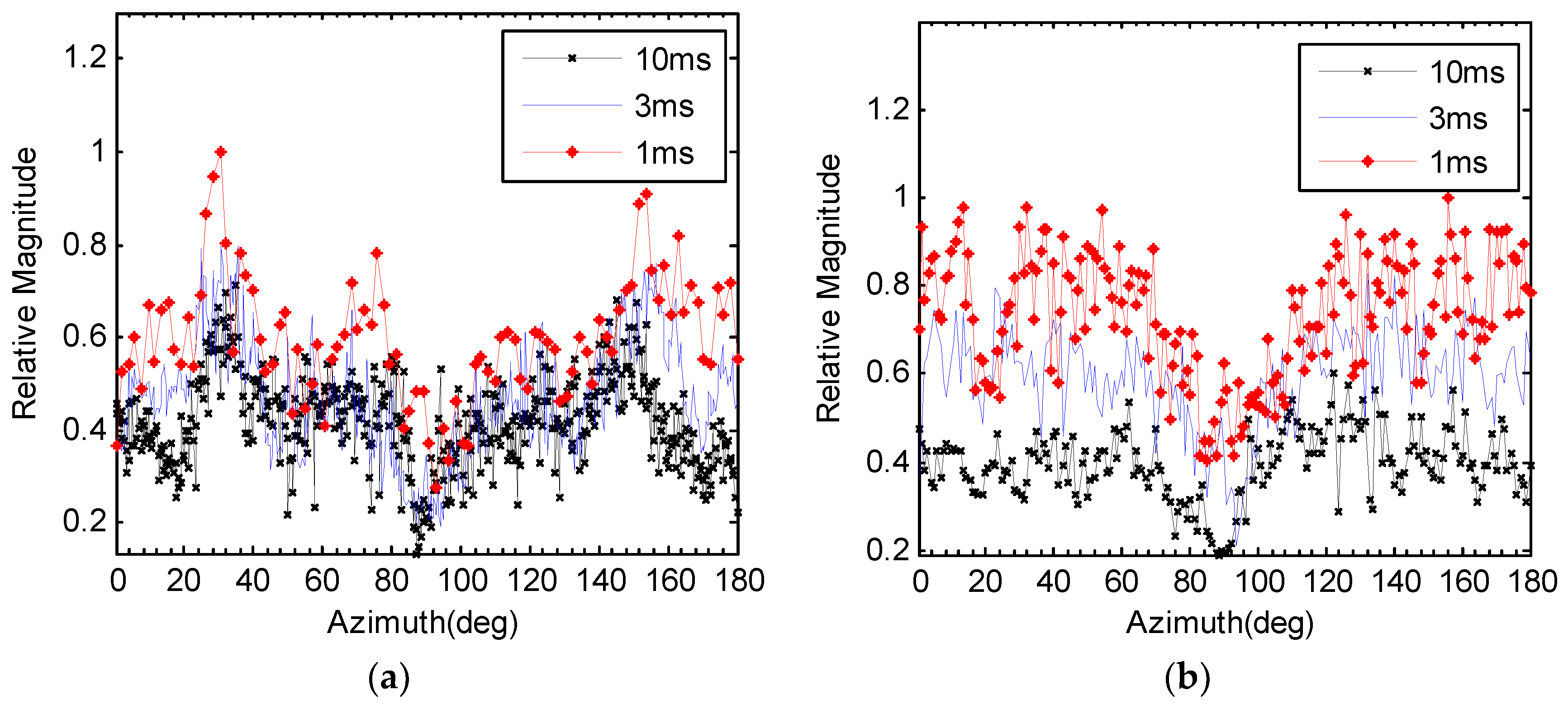
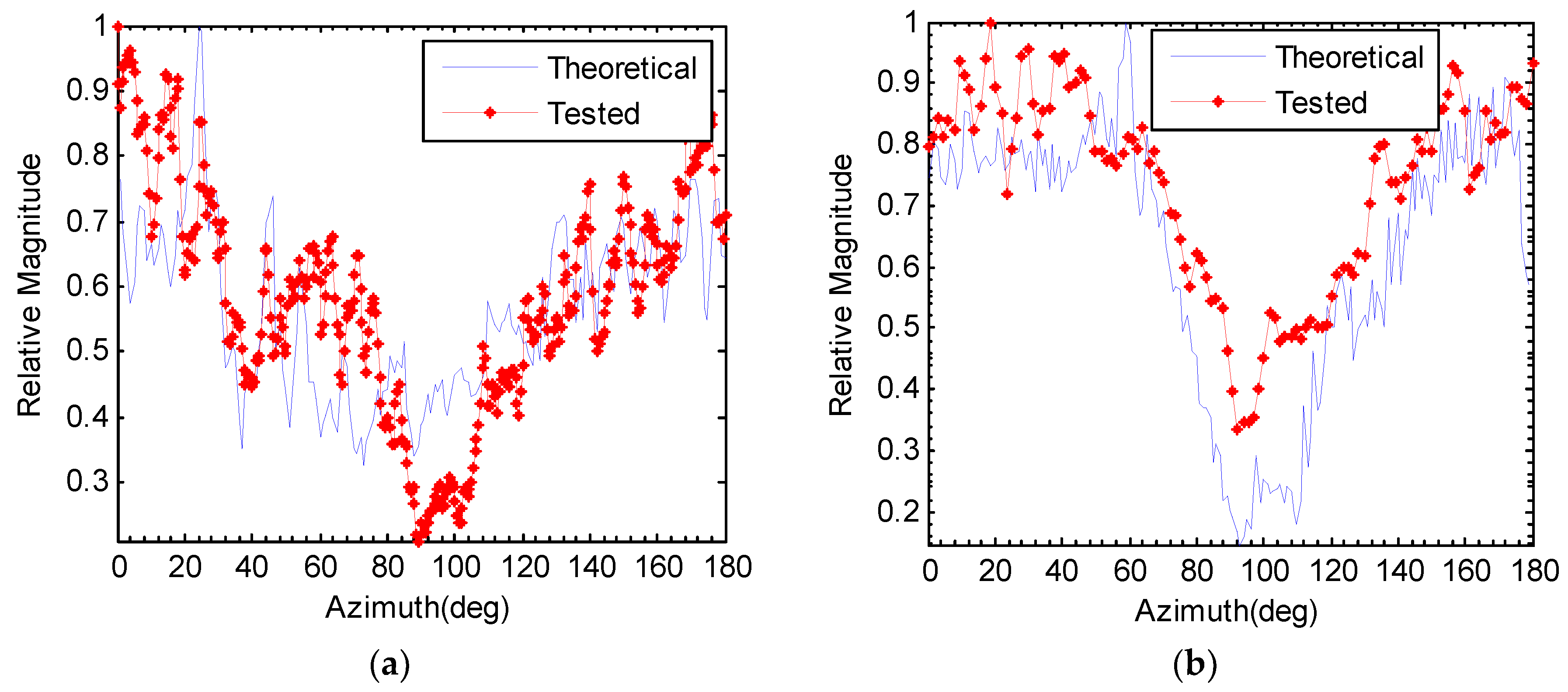
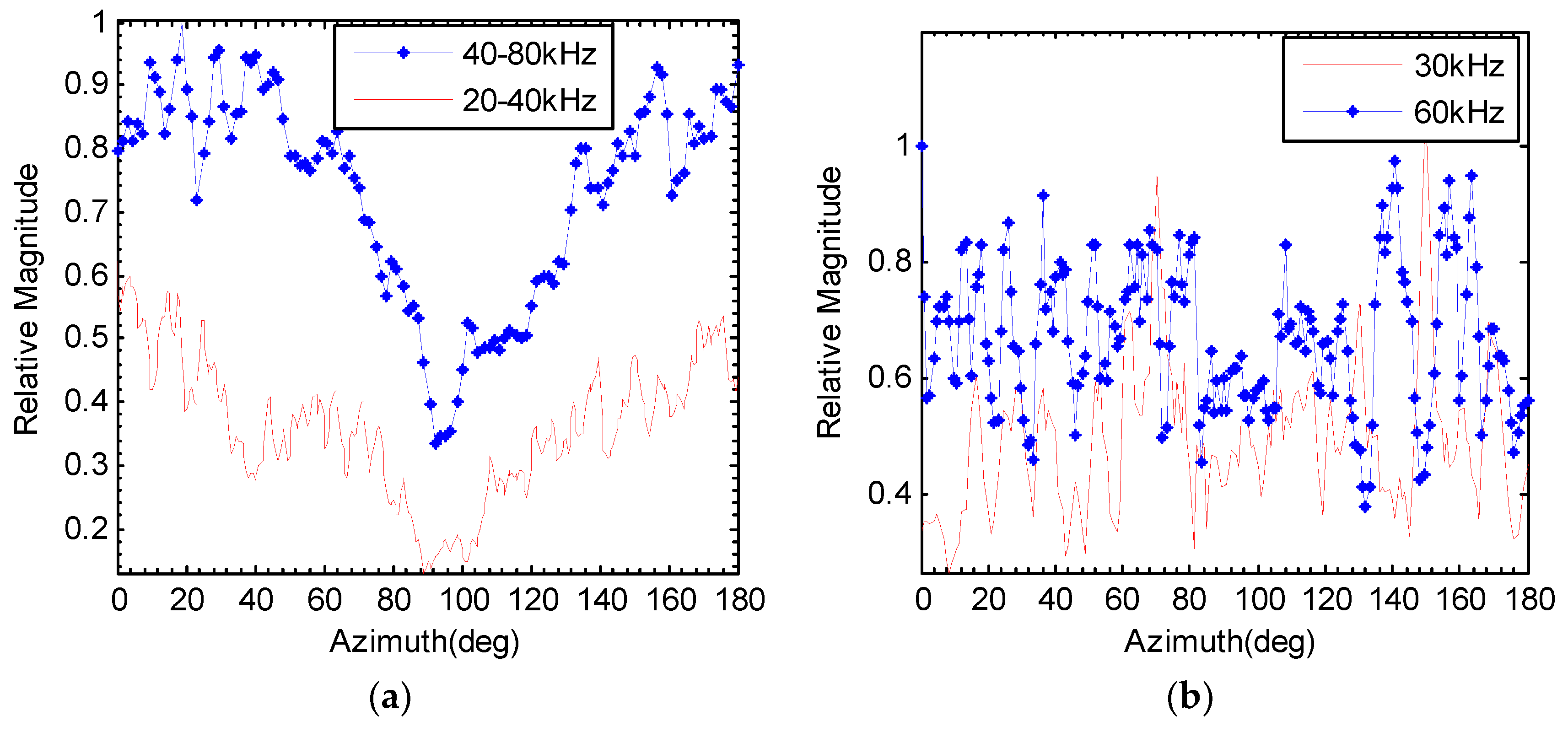
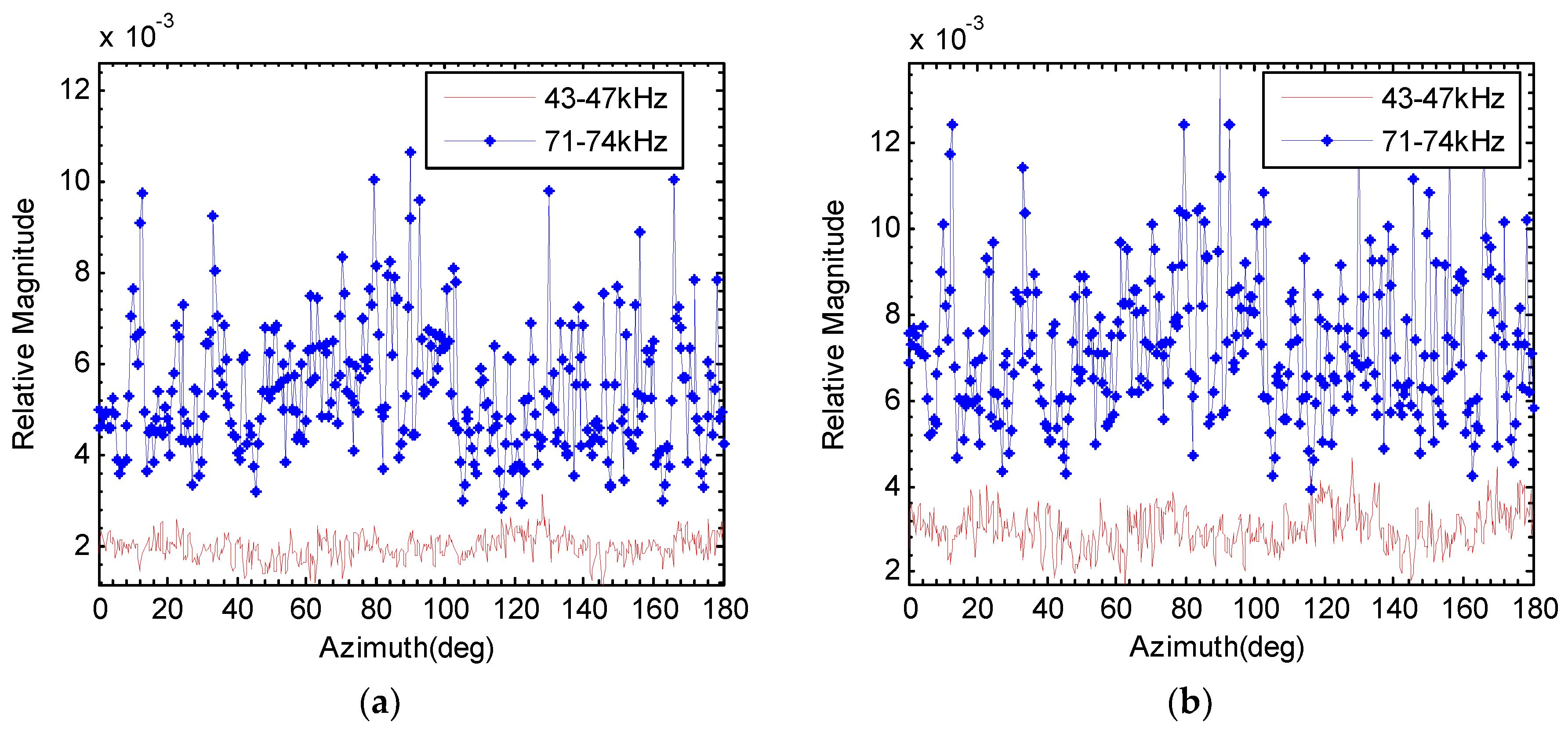
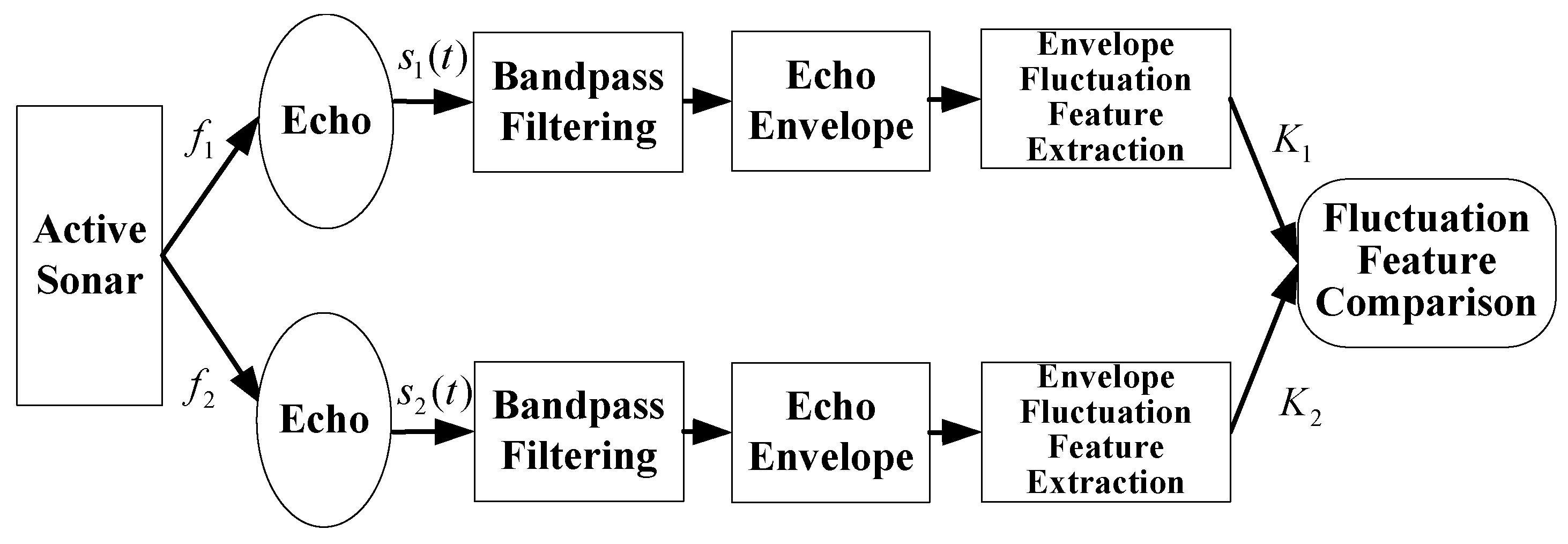
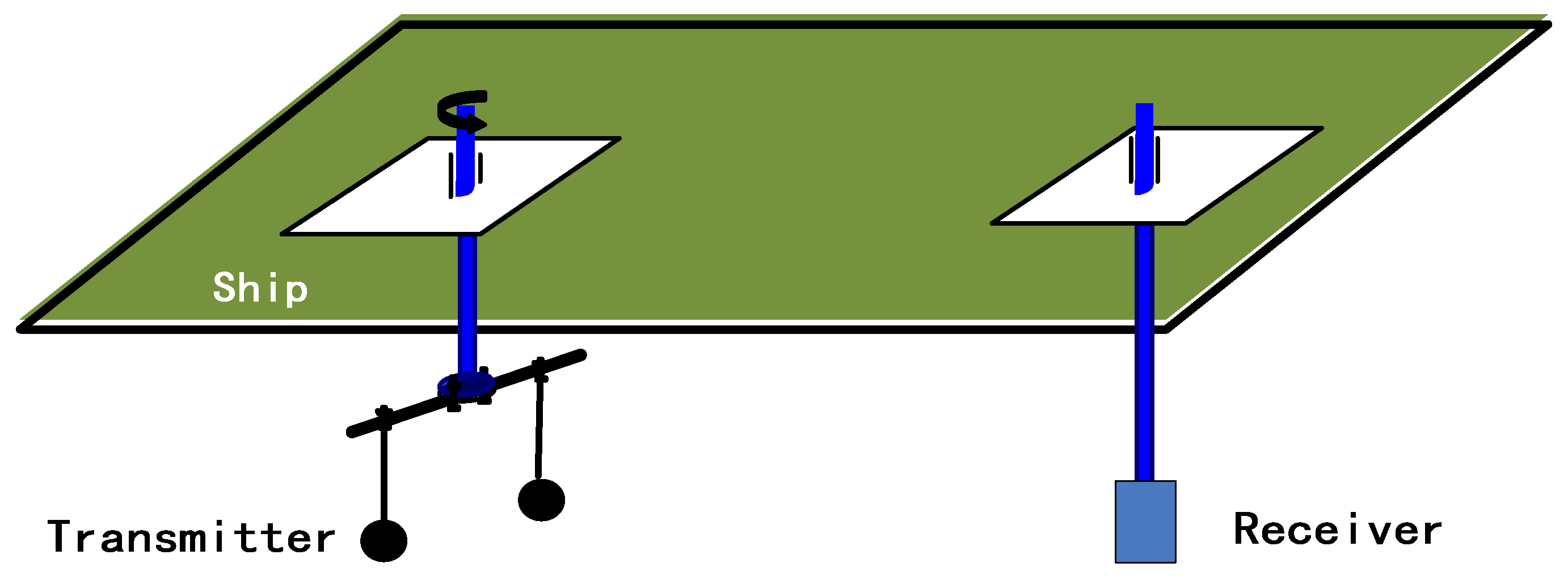
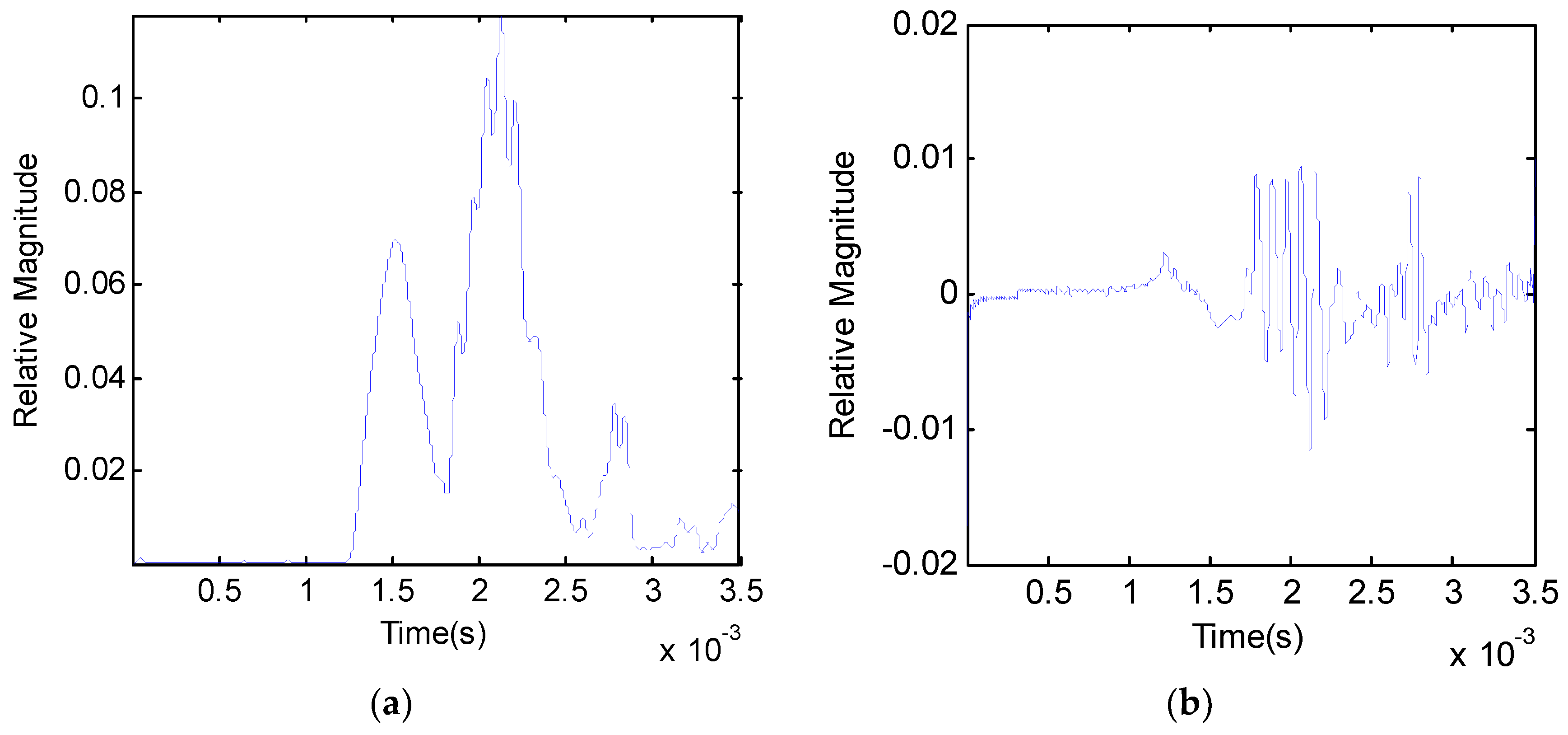
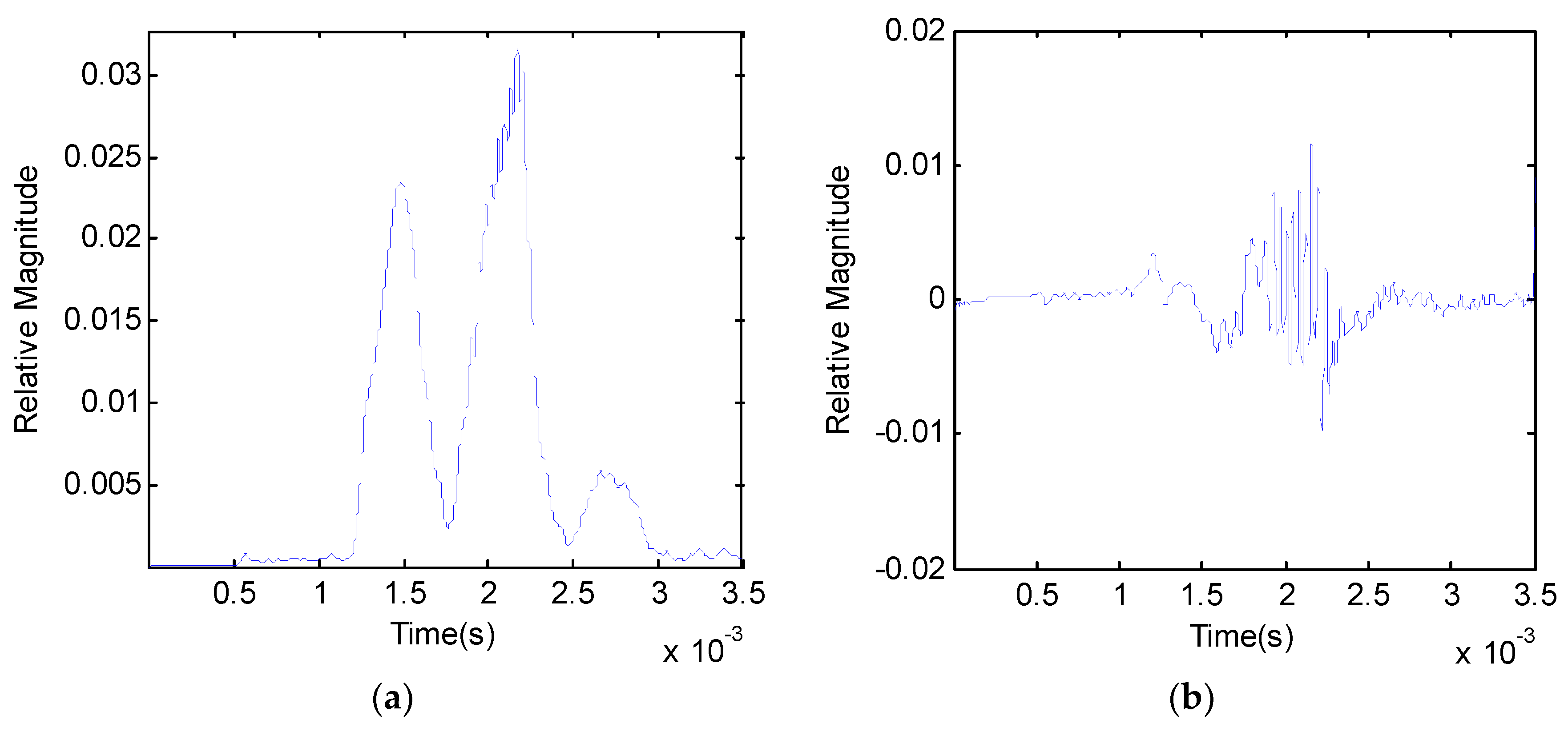
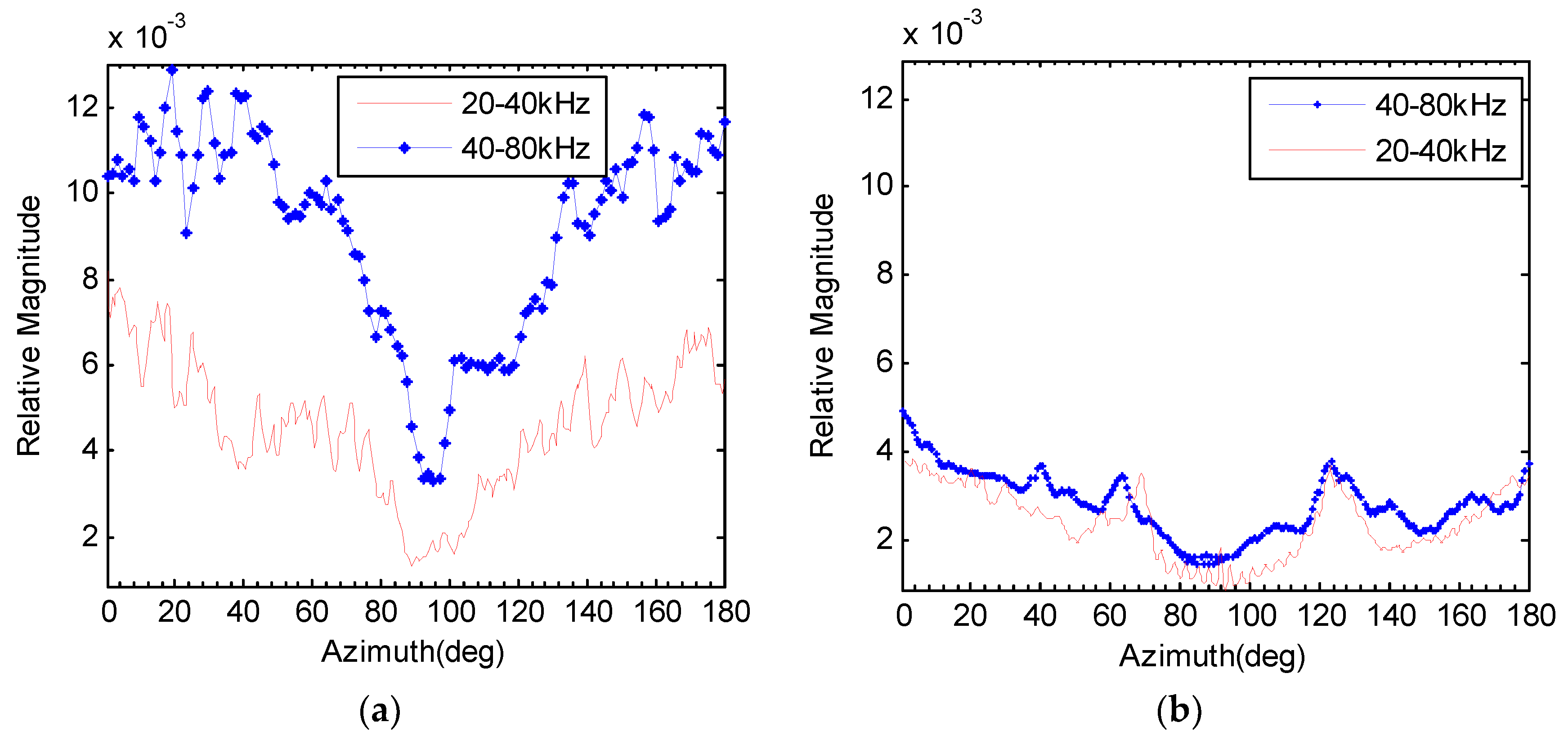
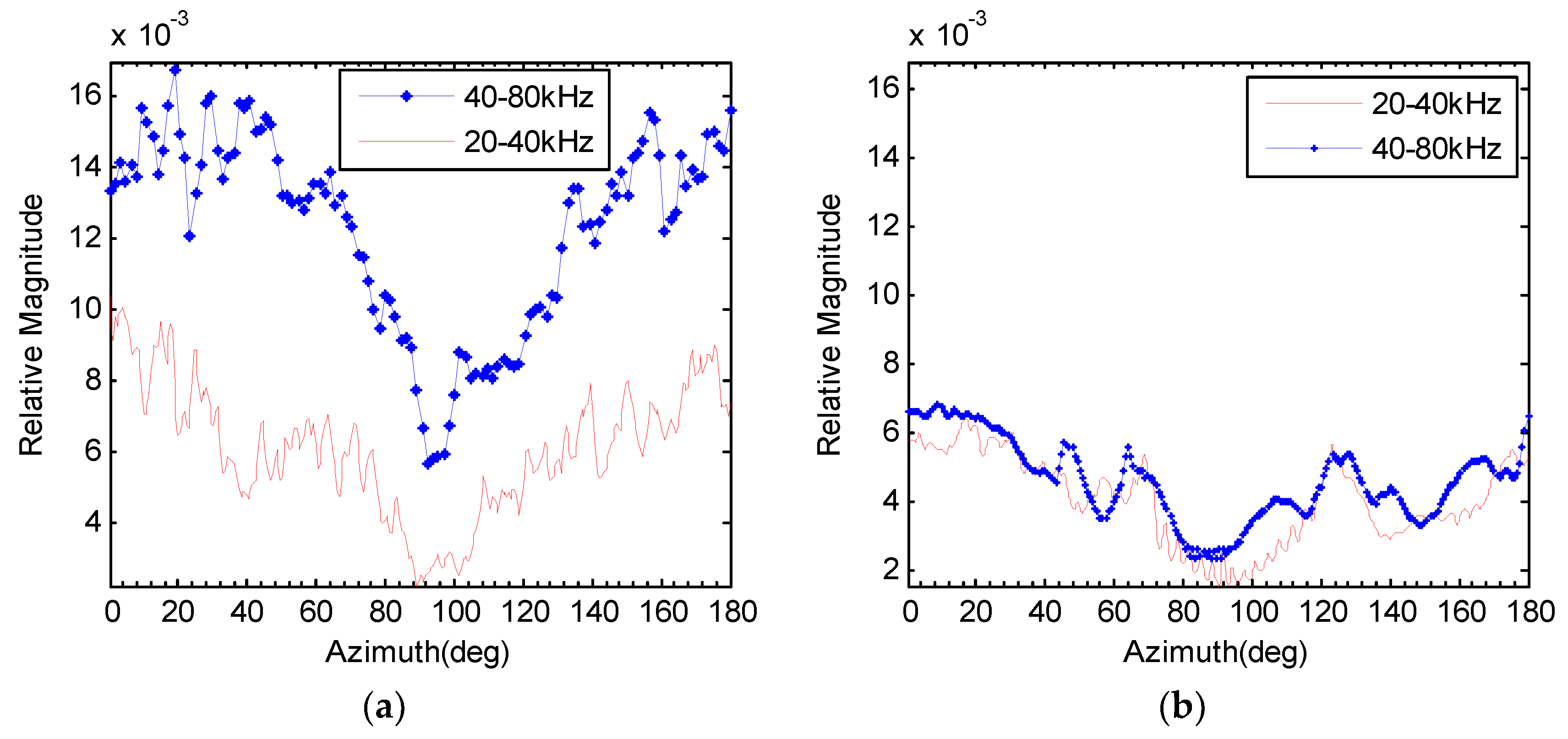
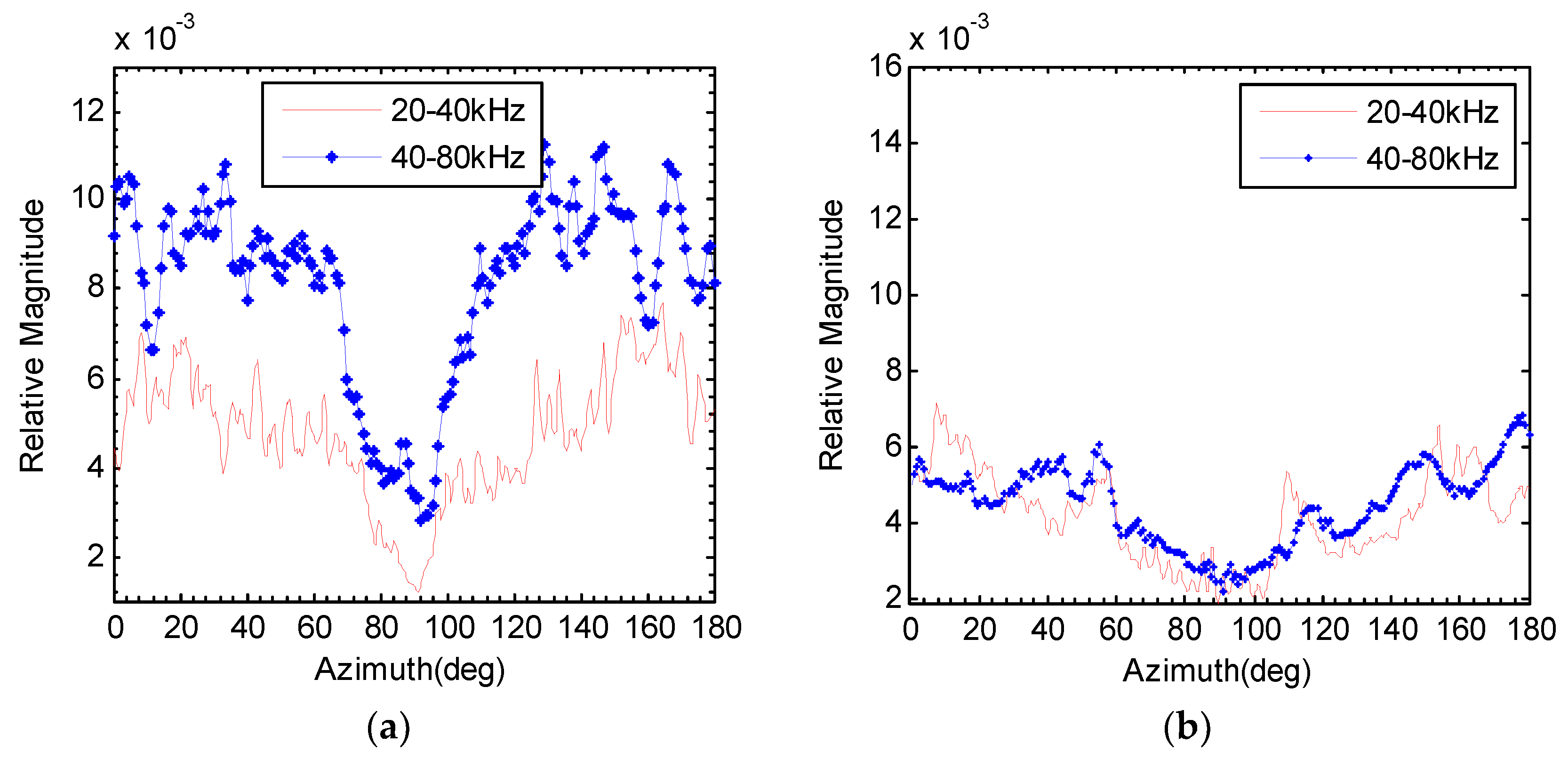
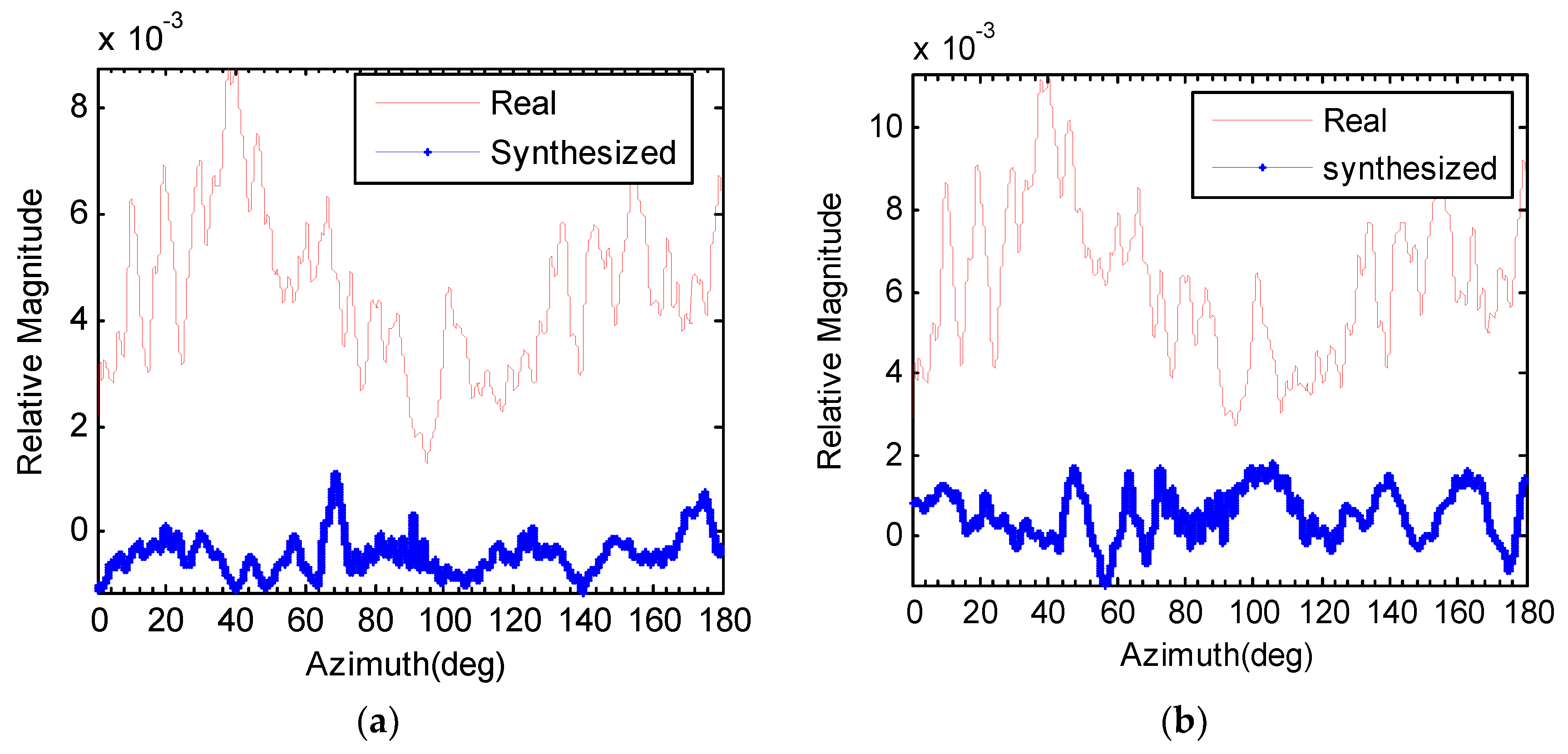
| Signal Form | Frequency | Pulse Length | Target |
|---|---|---|---|
| CW | 30 kHz, 60 kHz | 1 ms, 3 ms, 10 ms | Benchmark model |
| LFM | 20–40 kHz, 40–80 kHz | 1 ms, 3 ms, 10 ms | Benchmark model |
| 43–47 kHz | 1 ms | Rock | |
| 71–74 kHz | 1 ms | Rock |
© 2018 by the authors. Licensee MDPI, Basel, Switzerland. This article is an open access article distributed under the terms and conditions of the Creative Commons Attribution (CC BY) license (http://creativecommons.org/licenses/by/4.0/).
Share and Cite
Chen, Y.; Li, S.; Jia, B.; Li, G.; Wang, Z. Feature of Echo Envelope Fluctuation and Its Application in the Discrimination of Underwater Real Echo and Synthetic Echo. Appl. Sci. 2018, 8, 1329. https://doi.org/10.3390/app8081329
Chen Y, Li S, Jia B, Li G, Wang Z. Feature of Echo Envelope Fluctuation and Its Application in the Discrimination of Underwater Real Echo and Synthetic Echo. Applied Sciences. 2018; 8(8):1329. https://doi.org/10.3390/app8081329
Chicago/Turabian StyleChen, Yunfei, Sheng Li, Bing Jia, Guijuan Li, and Zhenshan Wang. 2018. "Feature of Echo Envelope Fluctuation and Its Application in the Discrimination of Underwater Real Echo and Synthetic Echo" Applied Sciences 8, no. 8: 1329. https://doi.org/10.3390/app8081329




